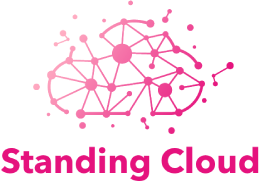In today’s competitive labor market, retaining top talent is more critical than ever. With remote and hybrid work models now commonplace, employees enjoy unprecedented flexibility and autonomy. However, this also means your best people are just one click away from a new opportunity.
Clearly, employee retention strategies must be a top priority. When valued team members leave, the costs extend far beyond recruiting and onboarding a replacement. From declining productivity to negative morale, turnover can seriously impact workplace culture and bottom-line results.
In this guide, we’ll explore essential tactics to keep your talented team members happy and engaged. Employee retention is crucial for any successful business, as it fosters a positive work environment and saves time and resources. We’ll delve into effective communication, recognition, and rewards, promoting work-life balance, career development opportunities, and fostering a supportive culture. By implementing these strategies, you’ll create a workplace that values its employees and nurtures their growth, leading to increased productivity and loyalty. Let’s get started on the journey to building a strong and united workforce!
- 1. The First Step to Long-Term Retention
- 2. The Power of Recognition
- 3. Investing in Employee Growth
- 4. The Role of Feedback in Retention
- 5. Embracing Workplace Flexibility
- 6. Addressing Employee Well-Being and Burnout
- 7. Equipping Employees with Essential Tools
- 8. Cultivating a Culture of Inclusion
- 9. Learning from Departures: The Value of Exit Interviews
- Conclusion
- Frequently Asked Questions
1. The First Step to Long-Term Retention
The onboarding process offers the first impression of your workplace. While a thoughtful orientation can boost engagement and loyalty from day one, lackluster onboarding often pushes new hires right back out the door.
Best practices for onboarding success include:
-
Assigning mentors to provide guidance and support
-
Scheduling check-ins to address questions and concerns
-
Clarifying roles with detailed job expectations
-
Outlining growth opportunities for motivation and development
When new hires feel genuinely welcomed and set up for success from day one, they are more likely to envision a long and rewarding career at your organization.
2. The Power of Recognition
Feeling valued and appreciated is a fundamental human need. When employees are recognized for their unique contributions, they experience greater motivation, engagement, and loyalty.
-
Personalized recognition enhances the customer experience, fostering satisfaction and emotional connections.
-
Acknowledged customers develop stronger brand loyalty and become advocates, referring others to your business.
-
Promptly addressing concerns through recognition reduces customer churn and boosts retention rates.
-
Appreciated customers share their positive experiences, attracting new clients and solidifying loyalty.
-
Recognizing and retaining customers leads to longer-lasting relationships, resulting in higher revenue over time.
-
Thoughtful recognition sets your business apart, making customers less likely to switch to competitors.
3. Investing in Employee Growth
In today’s workplace, it’s essential to prioritize employee growth and development, especially for millennials. According to a LinkedIn survey, a staggering 94% of employees are more likely to stay with a company that invests in their careers.
To support your employees’ growth, consider implementing mentorship programs and tuition reimbursement. A good businessman needs to know all the tactics about how to convince an employee to stay. For that, investing in their growth is one of the best ways possible to make them stay. Online learning platforms like LinkedIn Learning can provide affordable and flexible development options. Additionally, offering stretch projects or rotations can help your employees acquire new skills and build confidence to take on greater responsibilities.
4. The Role of Feedback in Retention
Feedback plays a crucial role in keeping your employees engaged and satisfied. Organizations that frequently collect feedback through surveys or one-on-one meetings see a 16-point increase in engagement compared to those that don’t.
Be sure to solicit open and honest input from your employees and take action on their suggestions. Addressing common concerns like communication, workloads, or company policies can make a significant difference in the overall employee experience. Remember, even small changes can lead to higher satisfaction and retention without the need for major overhauls.
5. Embracing Workplace Flexibility
The traditional 9-to-5 office schedule is becoming outdated. Employees now expect and demand flexibility in their work arrangements. A Future Forum Pulse study found that 93% of knowledge workers desire flexibility in their hours, and 76% want location flexibility.
To retain top talent, consider offering options like remote or hybrid work arrangements, flexible scheduling, and generous vacation time. By accommodating individual preferences while still meeting business needs, you can support your employees’ productivity, health, and work-life balance.
6. Addressing Employee Well-Being and Burnout
Employee burnout is a major reason for job dissatisfaction and turnover. Long hours, high stress, and unreasonable workloads contribute to this issue. A Deloitte survey revealed that nearly 40% of employees plan to leave their jobs in the next two years due to burnout.
To combat burnout, prioritize your employees’ physical and mental health by offering wellness benefits like gym memberships, counseling services, and stress management programs. Encourage employees to take time off as needed and set realistic expectations for availability after work hours. A culture that focuses on sustainability and work-life balance will foster long-term employee retention.
7. Equipping Employees with Essential Tools
In the digital age, having the right tools is vital for employee productivity and satisfaction. When employees lack access to the latest software, technology, or other necessary resources, frustration can arise.
To enhance retention, evaluate your team’s needs for upgraded devices, collaboration platforms, AI analytics, and more. Provide timely access and training to optimize the use of these tools. While there is a cost associated with providing these resources, it’s important to remember that losing an employee can be far more expensive in the long run.
8. Cultivating a Culture of Inclusion
Creating a diverse and inclusive workplace is not only the right thing to do but also contributes to better performance in various areas. However, having diversity alone is not enough; employees must feel welcomed, respected, and able to bring their authentic selves to work.
To promote retention, foster a culture where all employees feel safe, valued, and heard. Encourage inclusivity, acknowledge different backgrounds and communication styles, and hold leaders accountable for fair treatment of all team members. When inclusion is a shared priority, employee retention naturally strengthens.
9. Learning from Departures: The Value of Exit Interviews
Despite all efforts, some turnover is unavoidable. Exit interviews provide a valuable opportunity to gather candid insights from departing employees about your organization’s strengths, weaknesses, and opportunities.
Take the feedback seriously and identify common themes. Use this information as a catalyst for meaningful change that will help retain other talented team members in the long run.
Conclusion
In today’s dynamic work environment, retaining valuable employees is crucial for business success and consistent growth. This can be made easier by implementing proactive retention strategies. Organizations can create a culture where employees not only choose to stay but also thrive and contribute their best efforts.
If you have any experiences or advice on employee retention in today’s competitive market, please share them in the comments below!
Frequently Asked Questions
1. Why is employee retention crucial?
It ensures business stability, reduces hiring costs, and maintains a skilled workforce, leading to increased productivity and continuity.
2. How can I improve employee communication?
Hold regular team meetings, have an open-door policy, and use collaboration tools to create a transparent and supportive work environment.
3. What role does recognition play in retention?
Recognition boosts morale, increases job satisfaction, and reinforces a positive work culture, making employees feel valued and appreciated.
4. How can I promote work-life balance?
Offer flexible work arrangements, provide paid time off, and ensure reasonable work hours to help employees maintain a healthy balance.
5. How do career development opportunities impact retention?
Offering growth opportunities and training programs motivate employees to stay long-term, demonstrating a commitment to their professional advancement.



